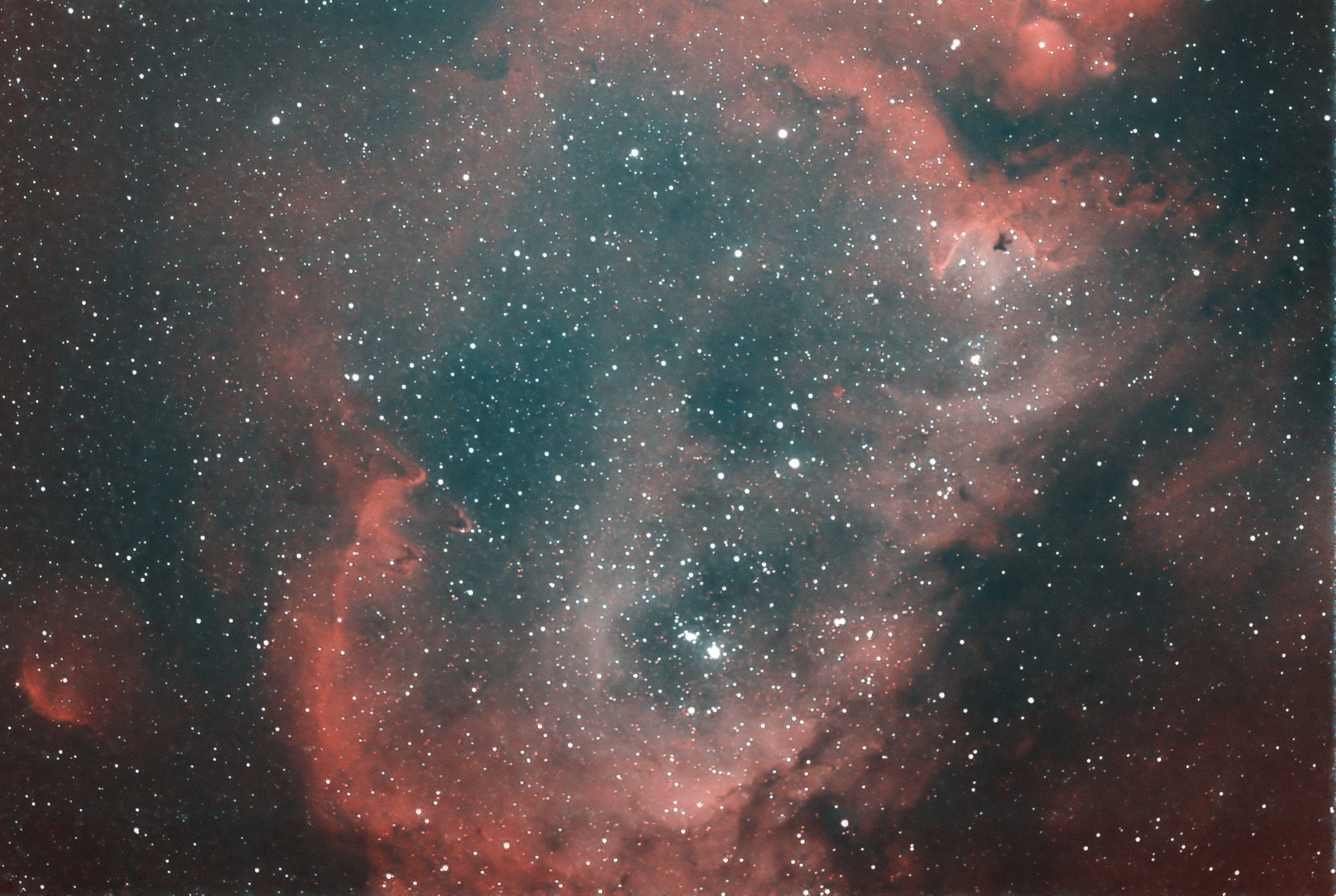IC 1848 – Soul Nebula Revisited

IC 1848, also known as the Soul Nebula, is a beautiful emission nebula located in the constellation Cassiopeia. It is located about 7,500 light-years away from Earth and spans approximately 100 light-years in diameter. The Soul Nebula is part of a larger star-forming complex that includes the Heart Nebula (IC 1805) and the open cluster Melotte 15.
The Soul Nebula gets its name from its distinct shape, which resembles a disembodied soul with outstretched wings. The nebula is a spectacular sight, with its intricate filaments of glowing gas and dust illuminated by the energetic light of young stars.
IC 1848 is an active star-forming region with a cluster of newly formed stars embedded within its core. These stars are responsible for ionizing the surrounding gas, causing it to emit light in various colours. The pinkish-red hue of the nebula is due to the emission of hydrogen gas, while the blue and green colours come from the emission of oxygen and sulfur gases, respectively.
The Soul Nebula is a popular target for astrophotography, and it’s easy to see why. Its intricate detail and vibrant colours make it a stunning subject for long-exposure photography. With the right equipment and technique, even amateur astronomers can capture breathtaking images of this celestial wonder.
Beyond its aesthetic beauty, the Soul Nebula is also a fascinating object for scientific study. Astronomers study the nebula to learn more about the processes that lead to new stars and planetary systems forming. By analyzing the properties of the gas and dust within the nebula, scientists can gain insight into the physical conditions that give rise to new stars and planets.
In conclusion, IC 1848, the Soul Nebula, is a beautiful and intriguing object in the night sky. Its intricate details and vibrant colours make it a favourite among astrophotographers, while its scientific importance makes it a valuable object for scientific study. Whether you’re an amateur astronomer or a professional scientist, IC 1848 is a must-see object in the night sky.
